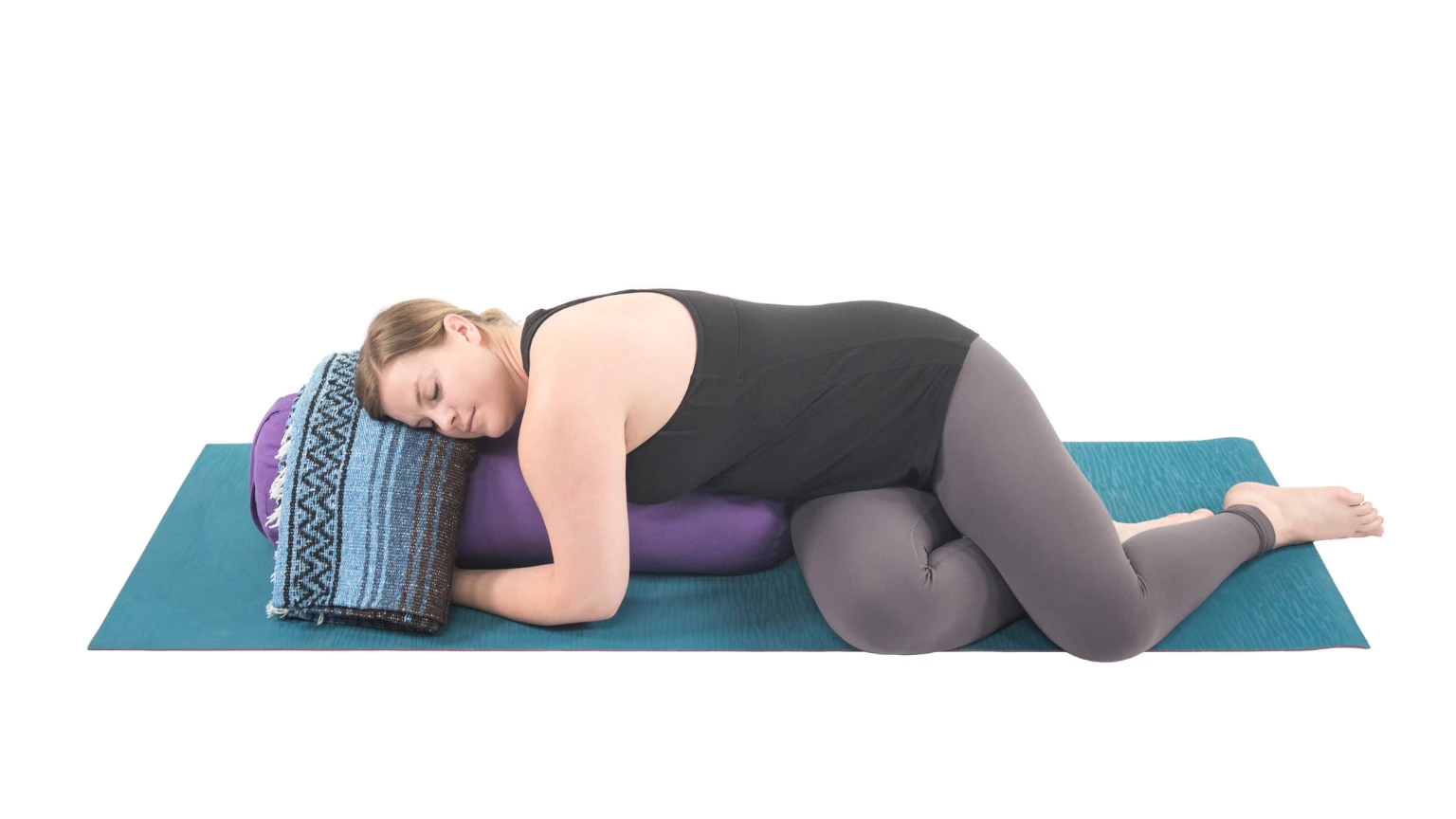Yoga Research: Study Suggests Yoga Practice Can Decrease Inflammation and Help Prevent Metabolic Syndrome

Metabolic Syndrome, also known as Syndrome X, isn’t one specific disease. Instead, it is a cluster of risk factors, including high blood sugar, high blood pressure, high cholesterol levels, and abdominal fat.
Although just one of these risk factors can lead to heart disease, for the approximately one in six Americans that the American Heart Association estimates to have all four of the risk factors, it increases the likelihood of diabetes fivefold, as well as increasing heart attacks and strokes.
Those most at risk for metabolic syndrome include:
-
People prone to blood clots and inflammation.
-
People in the following age groups: 50s and 60s. The risk of metabolic syndrome rises by 35% in your 50s and increases 45% into your 60s.
-
Those with other medical conditions, including fatty liver, polycystic ovary syndrome, and gallstones.
-
Men having a waist measurement above 35 inches and women having a waist measurement above 31 inches.
Previous studies have shown that yoga decreases both waist circumference and blood pressure, therefore reducing metabolic syndrome risk factors.
Yoga Decreases Inflammation
A new study published on December 5, 2017, Scandinavian Journal of Medicine in Sports (1) discovered that a yoga practice decreased pro-inflammatory proteins and increased anti-inflammatory proteins in the blood.
A random group of 97 people was assigned to either a control group of no health and fitness changes or to a group that participated in three yoga classes per week for a year. 
At the end of one year, the control group had no changes in health. The yoga group decreased their waist circumference, lowered their blood pressure and showed significant changes in their adipokines, the signaling proteins in fat tissue that tell the immune system to either release an inflammatory or anti-inflammatory response.
These findings support a regular yoga practice to help regulate metabolic syndrome, as well as confirming numerous studies showing the benefits of exercise on overall health and wellness.
The non-pharmaceutical treatment for metabolic syndrome is prevention. The following are recommendations for preventing the condition:
-
Exercise.
-
Lose weight if your waist circumference is higher than the recommended measurement.
-
Stop smoking.

-
Eat a healthy diet of low-fat protein, vegetables, and whole grains.
Since metabolic syndrome doesn’t have apparent symptoms, it’s also important to schedule regular checkups with your doctor to check blood pressure, sugar, and cholesterol.
Since abdominal fat is linked to stress, a regular yoga practice should include restorative poses to help decrease stress and cortisol levels.
Supported Reclining Pose
Try this gentle restorative pose to help you decrease stress: 
-
Place a yoga bolster along the length of your yoga mat. Use a block or other sturdy prop under the top end of the bolster to elevate it.
-
Lie back along the bolster, with your buttocks on the floor and your lower back against the bottom of the bolster so that your torso, from your low back to the back of your head, is supported on the bolster.
-
Allow your arms to lie gently along the sides of the hips, with palms turned upward. For additional support, place a folded blanket under each arm.
-
Allow your legs to lie flat and relaxed.
-
A sandbag placed on the top of your thighs will encourage your lower body to relax.
-
Using an eye pillow also allows for more profound relaxation.
For more on yoga and metabolic syndrome, check out Dr. Baxter Bell’s Yoga and Metabolic Syndrome: The Positive Possibilities.
Restoring Prana: Key Roles of the Diaphragm in Health and Vitality a course with Robin Rothenberg and YogaUOnline.
Study with Shawnee Thornton Hardy and YogaUOnline – Yoga for Kids with Special Needs: Focus on Autism and ADHD.
 Jennifer Williams-Fields E-RYT 200 is passionate about writing, yoga, traveling, public speaking, and being a fabulous single momma to six super kids. Doing it all at one time, however, is her great struggle. She has been teaching yoga since 2005 and writing since she first picked up a crayon. Although her life is a sort of organized chaos, she loves every minute of the craziness and is grateful for all she’s learned along the way. Her first book, “Creating A Joyful Life: The Lessons I Learned From Yoga and My Mom” is now available on Amazon. She has had her essays featured on Yahoo! and Dr. Oz The Good Life. She is a regular writer for Elephant Journal Magazine, Your Tango and YogaUOnline. See more from Jennifer at jenniferwilliamsfields.com.
Jennifer Williams-Fields E-RYT 200 is passionate about writing, yoga, traveling, public speaking, and being a fabulous single momma to six super kids. Doing it all at one time, however, is her great struggle. She has been teaching yoga since 2005 and writing since she first picked up a crayon. Although her life is a sort of organized chaos, she loves every minute of the craziness and is grateful for all she’s learned along the way. Her first book, “Creating A Joyful Life: The Lessons I Learned From Yoga and My Mom” is now available on Amazon. She has had her essays featured on Yahoo! and Dr. Oz The Good Life. She is a regular writer for Elephant Journal Magazine, Your Tango and YogaUOnline. See more from Jennifer at jenniferwilliamsfields.com.
Resources
1. https://onlinelibrary.wiley.com/doi/full/10.1111/sms.13029



